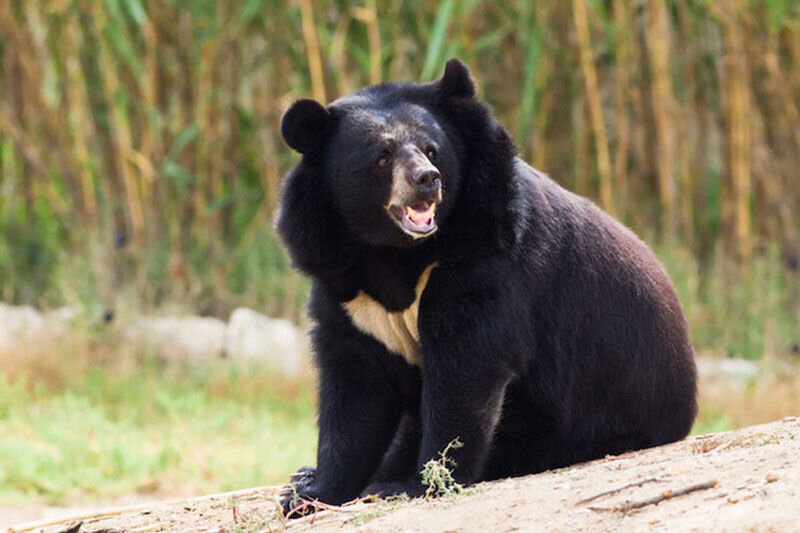Habitat destruction, poaching endanger Asiatic black bear

TEHRAN – The Asiatic black bear, living in southeastern Iran and known “mam” in the Baluchi language, has biological, aesthetic, scientific, and educational values, but is being pushed towards extinction due to habitat degradation and illegal poaching.
The Asiatic black bear, also known as the Baluchi black bear, lives mainly in forested areas, especially in hilly and mountainous areas at altitudes of 500 meters to 2700 meters, and is found in the provinces of Kerman, Hormozgan, and Sistan-Baluchestan with very low density.
The Asiatic black bear usually lives alone and is mostly nocturnal. It feeds on herbs, dates, olives, fruits, plant materials, insects and carcasses, and sometimes even hunts animals.
In some areas, it sleeps in caves during the winter and mates in late spring. The cubs are born in the winter and each female bear gives birth to between one and three cubs, and the cubs are milked up to 1.5 months after leaving the nest and stay with the mother for about two to two years. Females are able to reproduce at the age of three.
The Asiatic black bear is black, has a light brown muzzle, and a distinct white patch on the chest, which sometimes has the shape of a V. Its ears are bell-shaped, proportionately longer than those of other bears, and stick out sideways from the head. Its tail is 11 cm (4.3 in) long. Adults measure 70–100 cm (28–39 in) at the shoulder, and 120–190 cm (47–75 in) in length.
Asiatic black bears are similar in general appearance to brown bears but are more lightly built and are slenderer limbed.
The black bear has adapted to living on a tree, and its sharp claws and limbs are positioned to help it climb the tree. On the tree, the branches are placed below them, and therefore the nest-like profiles are one of the important signs of their presence in any area.
It lives in the Himalayas, in the northern parts of the Indian subcontinent, the Korean Peninsula, northeastern China, the Russian Far East, the Honsh and Shikoku islands of Japan, and Taiwan. It is classified as vulnerable by the International Union for Conservation of Nature (IUCN), mostly because of deforestation and hunting for its body parts. Although largely herbivorous, Asiatic black bears can be very aggressive toward humans, who frequently trap or kill them for traditional medicine.
Sustainable exploitation of biodiversity a must
Today, all governments have come to the conclusion that all aspects of human life, as well as growth and development, depend on biodiversity.
All three pillars of biodiversity namely, variation at the genetic, species, and ecosystem levels are important and must be considered to ensure biodiversity preserve; any damage to any of these three pillars will damage the entire biodiversity and pose a serious threat to human life.
“Indeed, Iran is not one of the megadiverse countries, like Brazil, India, and Malaysia, but it has habitats with the richest biodiversity.
However, various factors such as sustainable exploitation of biodiversity should come to the center of attention to better protect the country’s biodiversity, to do so, help local communities earn income, and biodiversity can also benefit from local communities’ protection,” Shahaboddin Montazemi, director of the wildlife's conservation office at the DOE told the Tehran Times in June.
He went on to say that “the DOE has taken extensive measures in various areas such as habitat, species, and genetics; as animal species in the country include 37 species of mammals, 78 bird species, 22 species of reptiles, 6 species of bivalves, and 25 species of fish of inland waters.
The organization's gene bank is also a major step toward the genetic protection of species.”
FB/MG

Comments